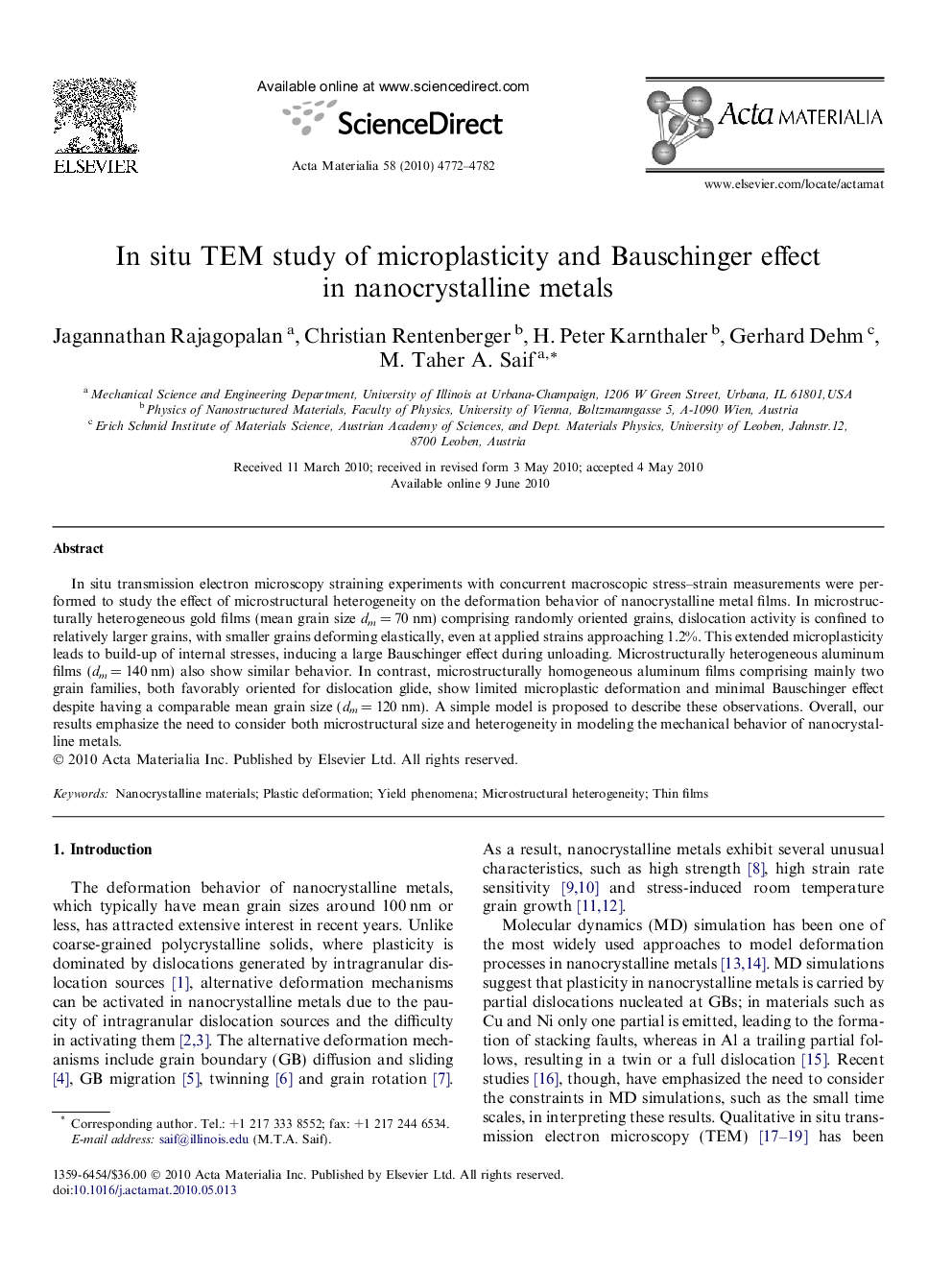| Article ID | Journal | Published Year | Pages | File Type |
|---|---|---|---|---|
| 1447388 | Acta Materialia | 2010 | 11 Pages |
In situ transmission electron microscopy straining experiments with concurrent macroscopic stress–strain measurements were performed to study the effect of microstructural heterogeneity on the deformation behavior of nanocrystalline metal films. In microstructurally heterogeneous gold films (mean grain size dm = 70 nm) comprising randomly oriented grains, dislocation activity is confined to relatively larger grains, with smaller grains deforming elastically, even at applied strains approaching 1.2%. This extended microplasticity leads to build-up of internal stresses, inducing a large Bauschinger effect during unloading. Microstructurally heterogeneous aluminum films (dm = 140 nm) also show similar behavior. In contrast, microstructurally homogeneous aluminum films comprising mainly two grain families, both favorably oriented for dislocation glide, show limited microplastic deformation and minimal Bauschinger effect despite having a comparable mean grain size (dm = 120 nm). A simple model is proposed to describe these observations. Overall, our results emphasize the need to consider both microstructural size and heterogeneity in modeling the mechanical behavior of nanocrystalline metals.
